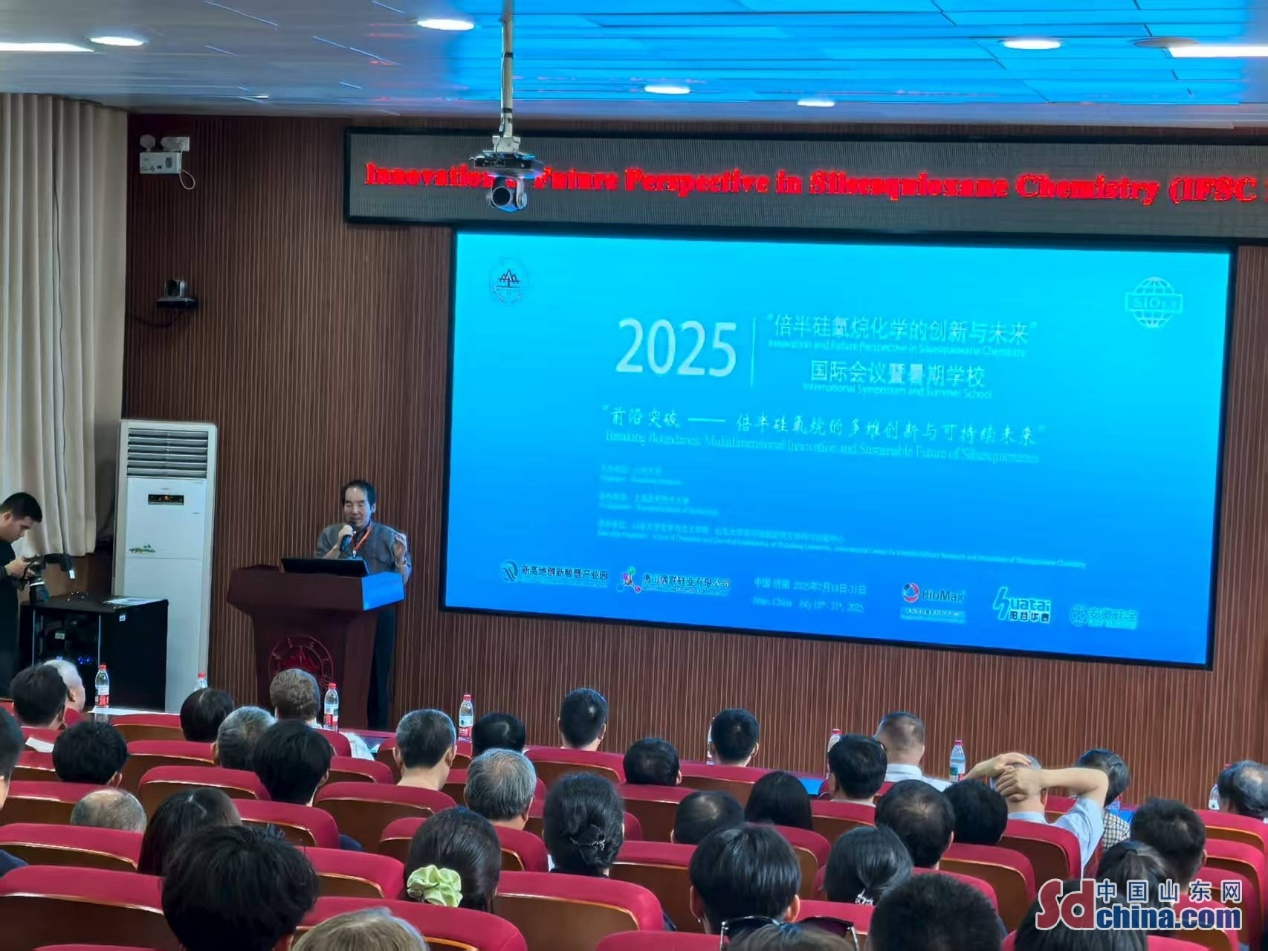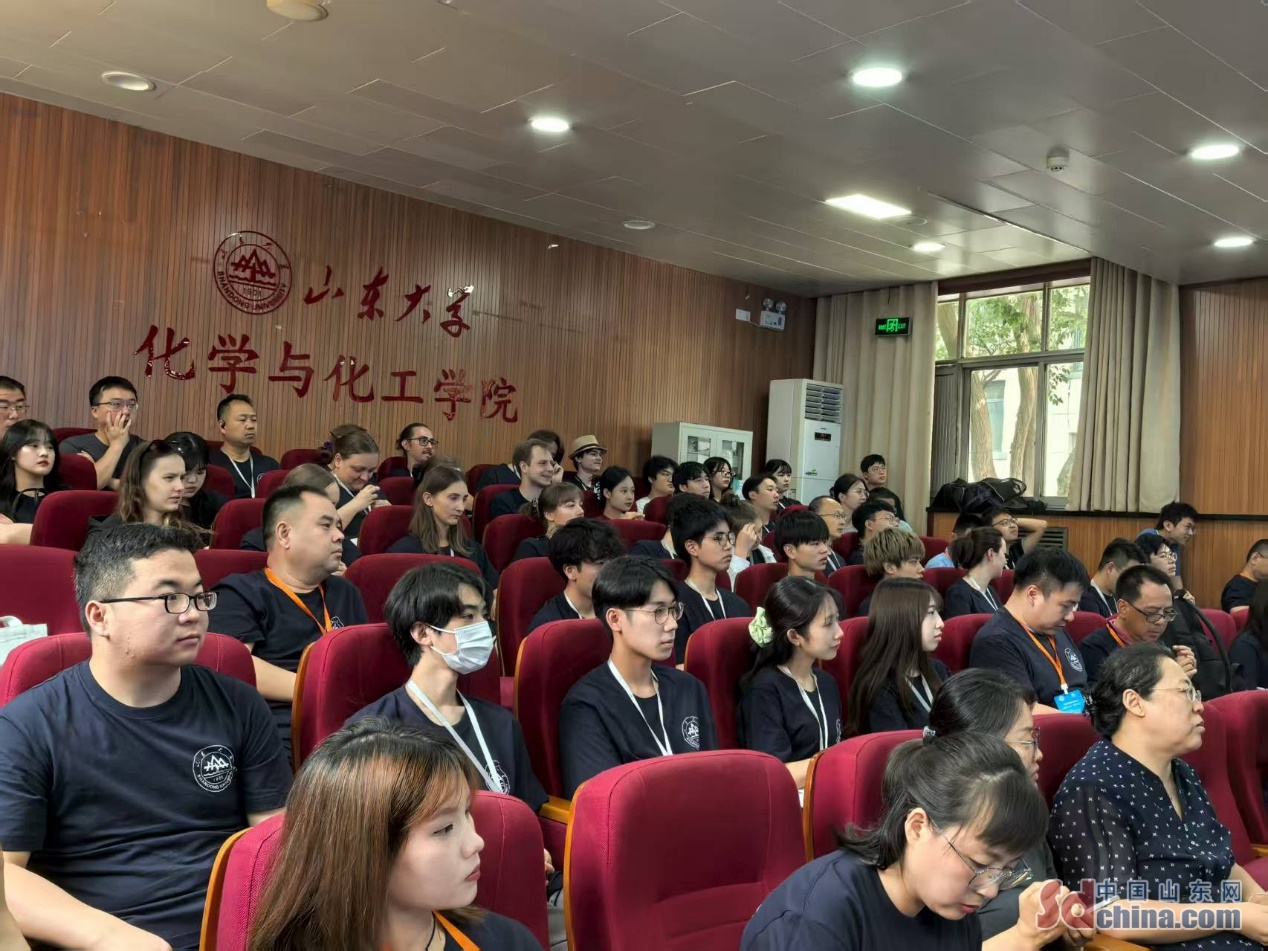
From July 18th to 31st, 2025, the International Symposium and Summer School on Innovations and Future Perspectives in Silsesquioxane Chemistry were held at Shandong University. Organized by Shandong University and co-hosted by its School of Chemistry and Chemical Engineering and the Interdisciplinary Research Center of Silsesquioxane, the event gathered over 120 participants from 46 institutions worldwide (17 international and 29 domestic), including more than 50 international delegates from over 10 countries such as the United States, France, Japan, Poland, South Korea, Russia, Belarus and Thailand. The conference received joint support from the China Scholarship Council and the China Education Association for International Exchange, and was officially included in the 15th "Education Without Borders" Education Week of the Shanghai Cooperation Organization Member States in 2025.
The opening ceremony took place on July 19th at the Academic Lecture Hall of the School of Chemistry and Chemical Engineering. Vice dean Bu Naipeng of the International Affairs Department of the Shandong University emphasized the university's commitment to building a world-class institution and strengthening international collaboration in this field. Professor Zhang Jintao, Vice Dean of the School, highlighted the school's dedication to fostering global academic exchanges and cultivating interdisciplinary talents with international perspectives. Professor Masafumi Unno from Gunma University, Japan, remarked that the conference has become the most influential academic event in the field after more than a decade of development. Ethan Thomas Chandler, a doctoral student from Bowling Green State University, USA, expressed gratitude for the valuable learning opportunities provided to young scholars.
Conference Chair, Professor Hongzhi Liu noted the rapid development of silsesquioxane and its revolutionary potential in addressing global challenges like carbon neutrality. The conference focused on four key areas: precise molecular design and synthesis, development of smart functional materials, industrial applications, and sustainable development pathways. The academic program featured 23 keynote lectures and 34 young scholar presentations, showcasing cutting-edge research including breakthroughs in precise synthesis by Prof. Unno, development of photo-responsive materials by Prof. Shimojima, discovery of σ−σ* conjugation by Prof. Laine, innovative applications in water treatment and biomedicine. Notable interdisciplinary achievements included polyimide hybrid materials by Academician Ha Chang-Sik, machine learning applications by Prof. Przekop, nanoplastic detection technology by Prof. Tanaka and novel hybrid nanoparticle synthesis by Michel Wong Chi Man.

A special session explored the integration of artificial intelligence in silsesquioxane research. Following the conference, 40 international students participated in a two-week summer school featuring cultural activities, industrial visits, and hands-on workshops.
This event has significantly advanced global collaboration in silsesquioxane chemistry while establishing an important platform for nurturing the next generation of scientists with international vision.